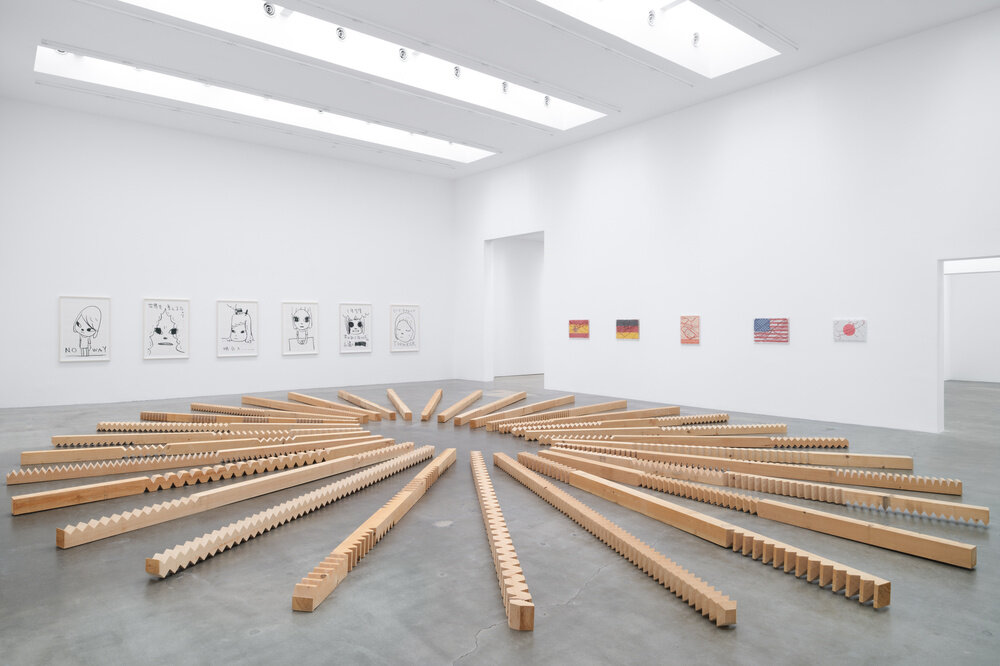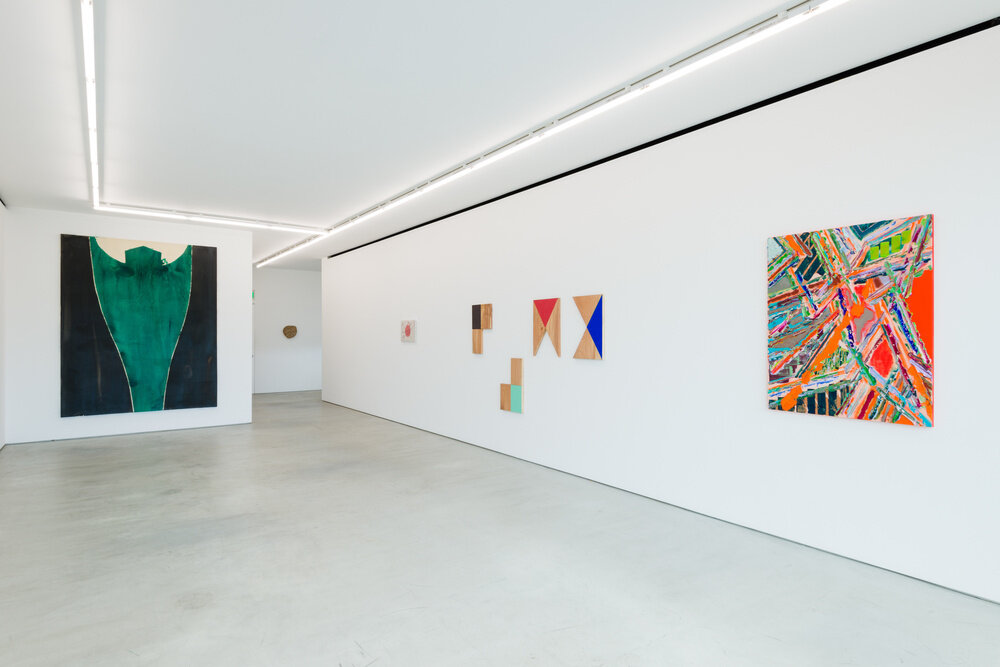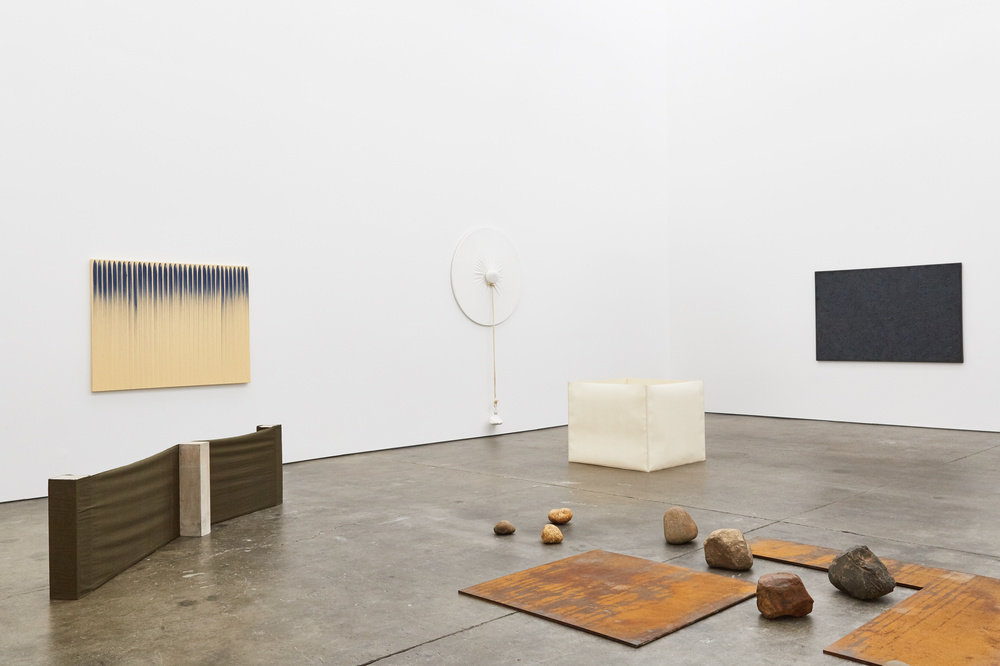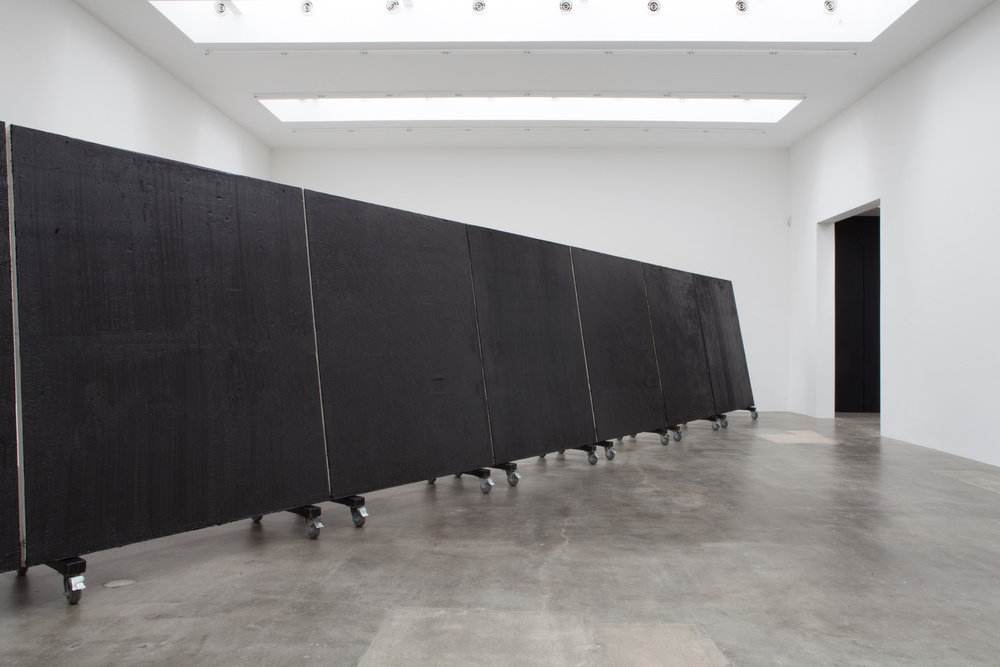Koji Enokura

Koji Enokura
June 6 – July 13, 2013Los Angeles

Written with a Splash of Blood
January 13 – March 3, 2024Los Angeles

February 20 – March 19, 2021Tokyo

July 7 – September 16, 2017San Francisco

Zhu Jinshi, Koji Enokura, Quentin Morris
May 13 – June 25, 2016Los Angeles

Curated by Mika Yoshitake
February 25 – April 14, 2012Los Angeles
Biography
Koji Enokura (b. 1942, Tokyo, Japan; d. 1995, Tokyo, Japan) received an MFA in painting at the Tokyo National University of Fine Arts and Music in 1968 and taught there from 1975 until his death. At the end of the 1960s, he became associated with a loose group of artists who collectively came to be known as Mono-ha (“school of things”). Their ephemeral, site-specific work explored natural and industrial materials, examining their respective material qualities and the interdependent relationships generated by specific placements within a space. Enokura created one of his most iconic installations at the Paris Youth Biennale: Wall (1971), a three-meter-tall and five-meter-wide concrete partition between two trees in the Parc Floral de Paris. Throughout the first half of the 1970s, Enokura stained paper, cloth, felt, and leather with oil and grease. He also discolored the floors and walls of galleries and outdoor spaces. In his writings he stated, “It is the tension between the body and the material that interests me, and that’s what I want to explore. It attests to the consciousness I have of my own existence.” Though no longer extant, these installations are documented in photographs. During the 1980s and 1990s, Enokura continued to explore the act of staining on cotton fabric. In these works, the artist variously contrasts smooth fields of black paint with unpainted fabric, drenches the entire surface, or uses oil-soaked beams of lumber to mark the fabric—either affixing the beams to the work or leaning them against it. Enokura is also known for his signature fabrics hung diagonally on the wall and folding out onto the floor.
During his lifetime, Enokura had numerous solo exhibitions at Japanese galleries and museums, including the Saito Memorial Kawaguchi Museum of Contemporary Art, Kawaguchi, Japan and the National Museum of Art, Osaka, Japan both in 1994. In 2005, the Museum of Contemporary Art, Tokyo, Japan held a major retrospective. Enokura’s work has also been included in landmark surveys including Reconsidering Mono-ha, National Museum of Art, Osaka, Japan (2005); Avanguardie Giapponese degli Anni 70, Setagaya Art Museum, Tokyo, Japan (1993) and Galleria Comunale d’Arte Moderna, Bologna, Italy (1992); Venice Biennale, Venice, Italy (1978, 1980); Biennale of Sydney, Sydney, Australia (1976); Paris Biennale, Paris, France (1971); and the legendary Tokyo Biennale ‘70: Between Man and Matter, Tokyo Metropolitan Art Museum, Tokyo, Japan (1970). Recognition in the United States began with his inclusion in Requiem for the Sun: The Art of Mono-ha, curated by Mika Yoshitake and held at Blum & Poe, Los Angeles, CA in 2012. This large-scale survey was the first overview of the movement in North America. Blum & Poe subsequently presented Enokura’s first solo exhibition in Los Angeles in 2013. Since then, he has been included in major exhibitions such as Collection: The Aesthetics of Contemporary Japan, National Museum of Art, Osaka, Japan (2020); Japanorama. New vision on art since 1970, Centre Pompidou-Metz, Metz, France (2017); and Re: Quest―Japanese Contemporary Art since the 1970s, Museum of Art, Seoul National University, Seoul, South Korea (2013). His work is represented in numerous institutional collections, including Fukuoka Art Museum, Fukuoka, Japan; Hara Museum of Contemporary Art, Tokyo, Japan; Hiroshima City Museum of Modern Art, Hiroshima, Japan; Hirshhorn Museum and Sculpture Garden, Washington D.C.; Hyogo Prefectural Museum of Art, Kobe, Japan; Museum of Contemporary Art, Tokyo; Museum of Fine Arts, Gifu, Japan; National Museum of Art, Osaka, Japan; National Museum of Modern Art, Tokyo, Japan; Pinault Collection, Venice, Italy; Rachofsky Collection, Dallas, TX; Setagaya Art Museum, Tokyo, Japan; and Tokyo Metropolitan Art Museum, Tokyo, Japan, among others.
Selected Works
News
ArtAsiaPacific: BLACK
09/01/2016
Art in America: Koji Enokura
09/22/2013
ArtReview: Koji Enokura
09/01/2013
Related Publications
Requiem for the Sun: The Art of Mono-ha
Mono-ha: School of Things